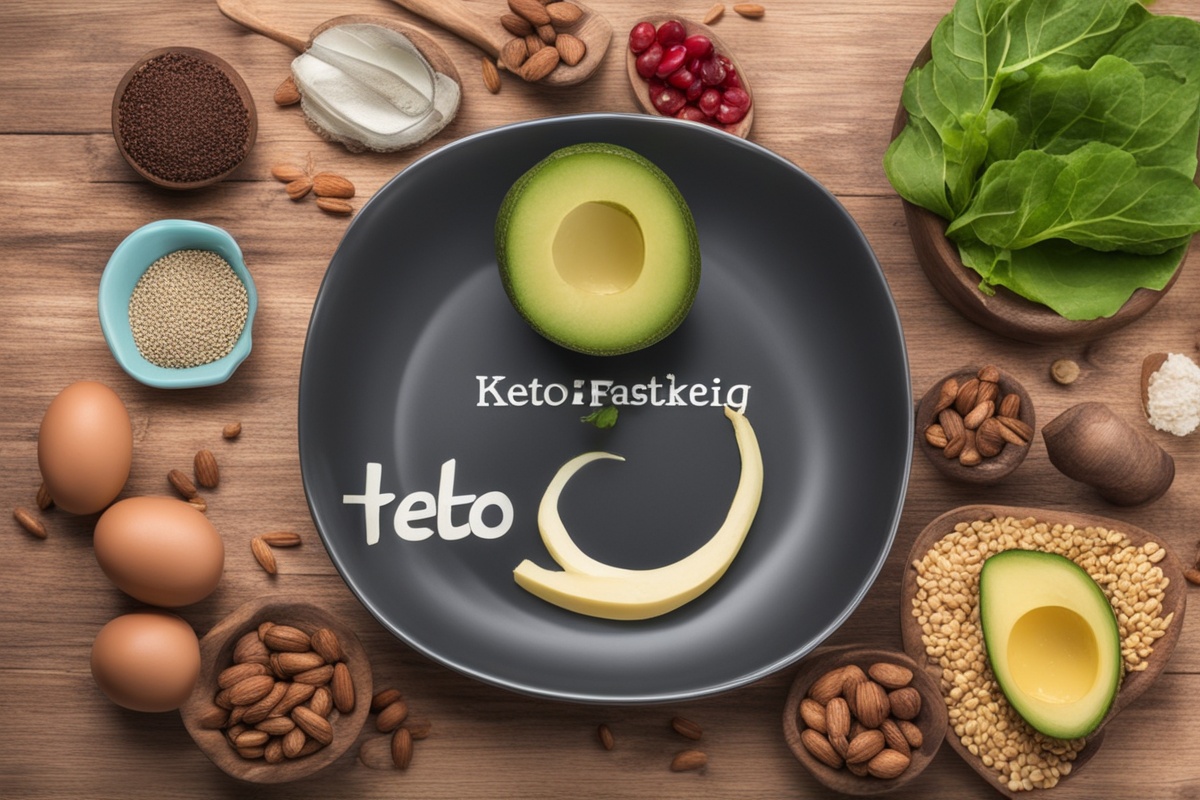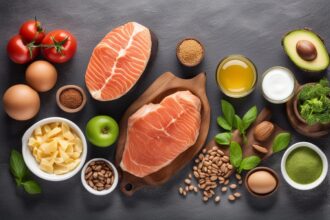Hey there, health enthusiasts! If you’ve been exploring ways to optimize your wellness, lose weight, or boost mental clarity, you’ve likely come across the dynamic duo of keto and fasting. Together, these two approaches create a powerhouse strategy for transforming your body and mind. In this post, we’re diving deep into the keto fasting benefits, blending science with practical tips to help you understand why this combo is gaining so much buzz. Whether you’re a seasoned faster or a keto newbie, stick around to learn how combining a ketogenic diet with intermittent fasting can supercharge your health journey.
What Is Keto Fasting, and Why Combine Them?
Let’s break it down. The ketogenic (keto) diet is a high-fat, moderate-protein, low-carb eating plan that shifts your body into a state of ketosis, where it burns fat for fuel instead of carbs. Intermittent fasting (IF), on the other hand, involves cycling between periods of eating and fasting, giving your digestive system a break and promoting cellular repair. When you combine the two, you get keto fasting—a strategy that leverages the fat-burning power of ketosis with the metabolic reset of fasting. The keto fasting benefits stem from how these practices amplify each other, making fat loss, energy stability, and even mental focus more achievable. It’s like putting your body on a fast track to wellness!
Keto Fasting Benefits for Weight Loss
One of the most talked-about reasons people try keto fasting is for shedding pounds, and the results can be impressive. When you’re in ketosis, your body is already primed to burn stored fat. Add fasting into the mix, and you’re further reducing insulin levels, which allows fat stores to be accessed more easily. Studies, like those published in the journal Obesity, show that intermittent fasting can enhance fat loss while preserving muscle mass—a huge win. Plus, the appetite-suppressing effects of ketosis make fasting feel less daunting. If you’re curious about keto diet and fasting results, many report losing 1–2 pounds per week when done consistently. It’s not just about the scale, though; it’s about sustainable fat loss.
Boosted Energy and Mental Clarity
Ever felt that mid-afternoon slump or brain fog that just won’t lift? Another incredible perk of combining keto and fasting is the boost in energy and mental sharpness. When your body runs on ketones (the byproducts of fat breakdown), your brain gets a steady fuel source without the blood sugar spikes and crashes tied to carb-heavy diets. Fasting also triggers autophagy—a cellular cleanup process—that may protect brain health, according to research from the Journal of Neuroscience. Many who practice keto fasting for health report feeling more focused and energized, even during fasting windows. Imagine tackling your to-do list with laser-like precision—that’s the kind of clarity we’re talking about!
Improved Metabolic Health and Blood Sugar Control
Beyond aesthetics, the benefits of keto and intermittent fasting shine when it comes to metabolic health. Both practices lower insulin levels and improve insulin sensitivity, which is key for managing or preventing type 2 diabetes. A 2018 study in Cell Metabolism found that intermittent fasting can reduce inflammation and oxidative stress, two culprits behind chronic diseases. Meanwhile, the keto diet has been shown to stabilize blood sugar by minimizing carb intake. For anyone struggling with energy dips or prediabetes, keto fasting could be a game-changer. Just remember to consult a healthcare provider if you have underlying conditions before starting.
Practical Tips to Get Started with Keto Fasting
Ready to reap the keto fasting benefits but not sure where to start? Don’t worry—I’ve got you covered with actionable steps to ease into this lifestyle. It’s all about starting small and staying consistent. Here’s a quick guide to help you begin:
- Choose a Fasting Schedule: Start with a beginner-friendly intermittent fasting plan like 16:8 (fast for 16 hours, eat during an 8-hour window). This pairs well with keto’s appetite control.
- Focus on Keto-Friendly Foods: During eating windows, prioritize healthy fats (avocado, olive oil), moderate protein (eggs, salmon), and low-carb veggies (spinach, broccoli).
- Stay Hydrated: Drink plenty of water, especially during fasting periods, to avoid dehydration and support detox processes.
- Ease Into It: If fasting feels tough, begin with shorter fasts (12 hours) and gradually increase as your body adapts to ketosis.
- Track Progress: Use a journal or app to monitor how you feel, noting energy levels and hunger cues to fine-tune your approach.
Common Challenges and How to Overcome Them
Like any lifestyle change, combining keto and fasting isn’t always smooth sailing. Some bumps along the road are normal, but with the right mindset, you can navigate them. Here are a few hurdles you might face while chasing those keto and fasting advantages, along with solutions:
- Keto Flu: Early on, you might feel tired or irritable as your body adjusts to ketosis. Combat this by staying hydrated and replenishing electrolytes with salt or supplements.
- Hunger Pangs: Fasting can trigger cravings initially. Sip on black coffee or herbal tea to curb appetite during fasting windows.
- Social Eating Pressures: Dining out or family meals can test your resolve. Plan ahead by checking menus for keto options or eating lightly before events.
- Overeating in Eating Windows: It’s tempting to overindulge after fasting. Stick to nutrient-dense foods and mindful portions to avoid undoing progress.
In wrapping up, the keto fasting benefits are hard to ignore if you’re looking to transform your health. From accelerating weight loss to enhancing mental clarity and stabilizing blood sugar, this powerful combo offers a holistic approach to wellness. Backed by science and embraced by countless success stories, pairing a ketogenic diet with intermittent fasting could be the key to unlocking your best self. Start small, listen to your body, and don’t hesitate to seek guidance from a nutritionist if needed. Have you tried keto fasting yet? Drop your thoughts or questions below—I’d love to hear how it’s working for you on your journey to better health!






